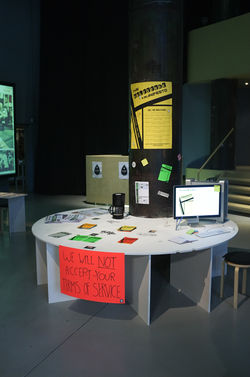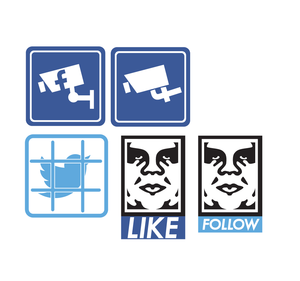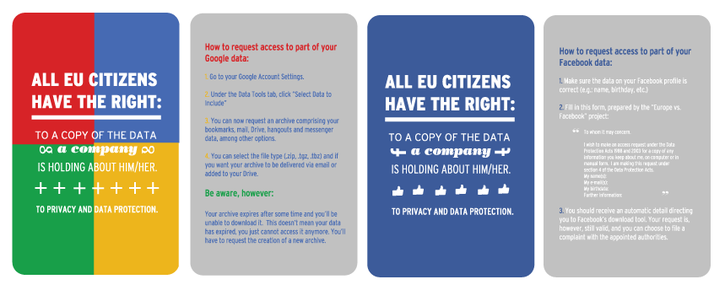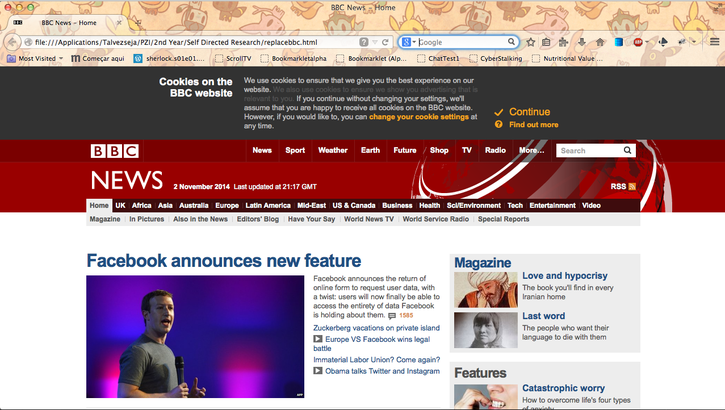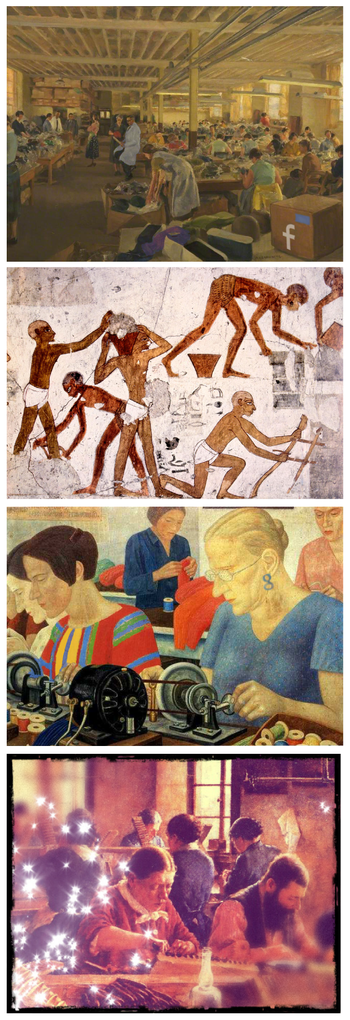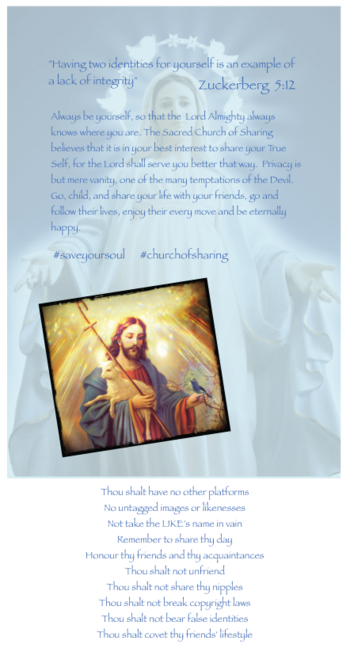User:Lidia.Pereira/GPS/PrP
IMMATERIAL LABOR UNION
INTRODUCTION
The Immaterial Labor Union is a project which aims to mobilize the digital multitude in the space of a union. It attempts to reflect upon the representational issues within the space of internet labor, the economics of immaterial labor, with a special focus on social media, and the extreme difficulties in dealing with distributed power when social, political and cultural differences are so easily obscured.
WHAT IS IT?
What I propose is to bring to life a platform for the encounter of the scattered voices of the digital age, researching the economics and management of a union further and how that all applies to this specific case. I propose to do this by gathering a community, a demanding force of dialogue amongst the different subjectivities involved, capable of clearly stating their demands within the economics of immaterial labor.
The Immaterial Labor Union intends, among other things, to provide a space for reflection around the question: “How not to be seen, yet still be represented?”, that is, how to incoroporate an alternative to social media monopolies without opting-out entirely, which, albeit ostracizing, is sometimes the only option.
RESEARCH FIELD / CONTEXTUALIZATION
The paradigm shift of the Foucauldian disciplinary society to the Deleuzian control society allowed for the birth of the multitude, which does away with the collective identity of the laborer and mutes the political voice of the industrial era masses. It is necessary then to forge links between individuals, adapting their demands to the changes in the landscape of economical production.
In order to realize my aims it will be necessary for me to study further what these changes exactly are, as well as the articulation of unions throughout history, extracting these consequences in order to make my union relevant. With this I hope to be sufficiently prepared to answer questions involving the nature of the claims of the immaterial labor union, that is, its raison d'être. These questions cannot be answered, however, without attending to others regarding the relevance and importance of such a movement, as well as the part of the population that it aims to reach.
Through the studying of similar projects and my own experiences in the field, I hope to shine a light on the major difficulties in unionizing the multitude, striving to find balance between piecemeal and utopian action. Through trial and error I'll derive lessons regarding the actions and modes of address which prove ineffective within the context of the digital multitude, and also the most effective in preventing co-optation. Also instrumental to mantaining the correct balance is a constant awareness in dealing with the space of the minorities.
A proof of concept of the Immaterial Labor Union was exhibited last academic year as the headquarters for a social movement. On a big table there were pamphlets, flyers, stickers and a Metro newspaper with news about the union, as well as a computer where one could visit the movement website. There was also an agenda, a cup with pens and a coffee-maker. On the wall, posters, post-it notes and photos of campaigns can be seen. There was an interest on my part to explore the possibilities of situationist détournement.
Since September I've been researching deeper into the genealogy of the sociogram, that is, the graphical representation of social relantionships in the terms of nodes and links, where every node represents a person and every link represents a relationship. This made it possible for me to begin to fathom the patterns which pervade contemporary modes of production. From the concepts of cybernetics/governance, abstraction of complex social subjects into sterile graphic representations and an ideological attempt to enforce positivist paradigms in normative structures, the history of the sociogram guides us through the concepts of social engineering, sociometry, relational databases and other tools for governance. The works of Jacob L. Moreno, the father of sociometry, and Nicolas Rose's "Governing the Soul" were key in tracing this history.
LARGER CONTEXT
In my approach to the Immaterial Labor Union I am very much influenced by the Telekommunisten idea which states that only by uniting can the immaterial workers fight against exploitation.
But how does this work happen? On the second chapter of "Bastard Culture", Mirkos Tobias Schäfer differentiates between cultural participation and participatory culture. Whilst the former is characterized by the intelectual elite deconstruction of cultural artifacts, the latter is imbued with concepts of DIY, prosumerism and action, construction and modification of cultural artifacts, there where software development becomes the "means of production of the digital age".
This participation can be, however, explicit and/or implicit. Explicit participation is driven by motivation, varying according to different users' skils. This motivation is not always altruistic or politically charged and users' context varies greatly, such as paid labor, leisure or unpaid voluntary work. Design implemented participation, otherwise known as implicit participation, allows for our leisure time to be commodified in big chunks of metadata extracted from our interactions and habits online.
Social media, particularly, benefits from user generated content contributing to information management systems, which can be exploited for improving information retrieval or gathering user information for market research. According to Maurizio Lazzarato, the production of subjects and social relations coincides, then, with economical power.
The ideological focus of social media on the individual rather than on the collective presents difficulties to the formation of a political conscience. Not only that, but the political, social and cultural assymetries to be found within the digital multitude present an obstacle nearly impossible to transpose.
"Networks Without a Cause", by Geert Lovink, is an attempt to bring back critique and social theory to the highly networked landscape of digital media. It aims to go beyond privacy, usability, access and etc. and study the tensions between the internet's enforcement of existing structures and the distribuition of control.
To further answer my questions about network economics, I'm reading Manuel Castells' "The Rise of the Network Society", which concerns the characterization of the global economy in the terms of information, communication and capital flow and how that affects society at large by giving those in power magnificent tools for control.
For the practical side of the project, the one concerning the tactical toolkit, I've been looking into the principles of "by any media necessary". Rita Raley, the author of "Tactical Media", defends that the efficacy of street demonstration has changed, subjective view which demands for negotiation in politically engaged new media projects. She argues that activism and creative dissent must, too, enter the network. Kluitenberg, on the contrary, states the ressurgence of street protest, a collective re-appropriation of the public space, in contrast to the "electronic isolation". He defends that "the political" must always coincide with the urban public space, it requires physical embodiment. In this sense, Kluitenberg's "Legacies of Tactical Media" couldn't be further away from Rita Raley's perspective.
As I have mentioned before, similar projects have already been done in the field of immaterial labor. Some projects, like Wages for Facebook, which condemns the turning of our subjectivity into profit under false pretences of sharing and friendship,and the International Data Union, which likewise equates the creation of data with labour, share with mine some of their main arguments. However, not being able to get past the Manifesto phase of their existence, are more of a departing point than of a real movement with real consequences. Projects like Europe Vs Facebook, attempting to explore if EU Data Protection Laws are enforceable in practice, on the contrary, take legal steps against Facebook in an attempt to empower the citizen. This is mostly the direction that I'm aiming for.
PRACTICAL STEPS
The initial efforts of the project are being directed towards research and small prototypes. This will allow for some consistency and flexibility of arguments, as well as gathering as many practical experiments with tactical media as possible, so to understand my possibilities better. So far I've experimented with cultural jamming, spoof news, practical tools for activism and software plug-ins.
The second part concerns the gathering of a community, both on a physical and digital platform. This process, to happen between January and March, is one that requires a good handle over the distribution of compelling campaigning material. Being thus, media formats to be explored must be carefully designed under a cohesive visual language, whose strength allows for translation and adaptation to their different specificities (pamphlets, booklets, social media pages, video/animation, website, etc.). By carefully designing a disruptive enough campaign I hope to gather a few interested people with whom I can then develop the toolkit for the liberation of the multitude, capable of critically disrupting social networking paradigms and of bringing new media campaigning methodologies to the traditional activist discourse.
The third part of the plan refers to the conception and development of the aforementioned toolkit, which will be the outcome presented as my graduation project. The exact components of such a toolkit remain to be decided, but examples such as the Facebook Dislike Button add-on or online/offline guerrilla tactics such as employed by the Yes Man should guide its development, as well as traditional situationist strategies for détournement. Workshops, debates and regular meetings would serve, among other things, the purpose of its conception and development.
The prototypes I've been working on constitute preliminary studies of campaigning strategies, as well as the possible character of tools comprising the aforementioned toolkit.
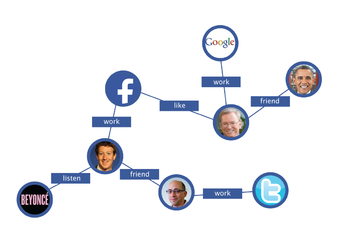

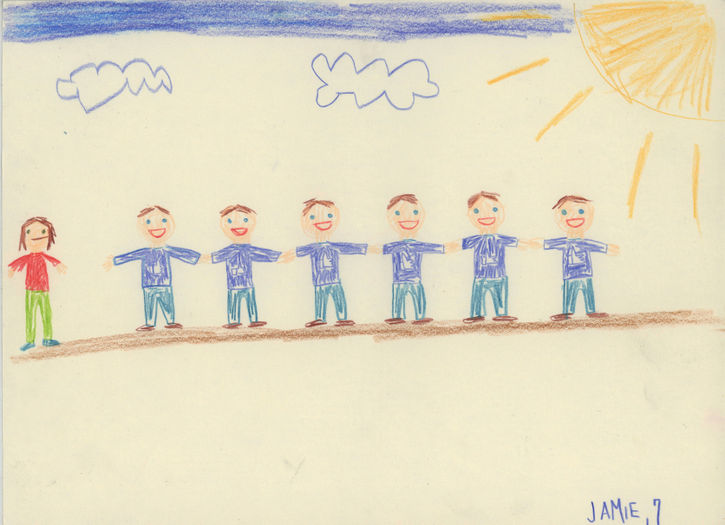
REFERENCES
Lovink, Geert. “Networks without a Cause”. 2011.
Hui, Yuk and Halpin, Harry. “Collective Individuation: The Future of the Social Web”
Moreno, Jacob L. Moreno. "Foundations of Sociometry: An Introduction in Sociometry". 1941.
Rose, Nicolas. "Governing the Soul: The Shaping of the Private Self". 1989.
Lazzarato, Maurizio. "Immaterial Labor." Immaterial Labor. Trans. Paul Colilli and Ed Emery. Web. February/April/May/June 2014. <http://www.generation-online.org/c/fcimmateriallabour3.htm>
Schäfer, Mirko Tobias. "Claiming Participation." Bastard Culture!. Print.
Castells, Manuel. "The Rise of the Network Society". 2010.
Raley, Rita. "Tactical Media". 2009
Kluitenberg, Eric. "Legacies of Tactical Media". 2011.
Popper, Karl. "The Open Society and its Enemies". 1962.

